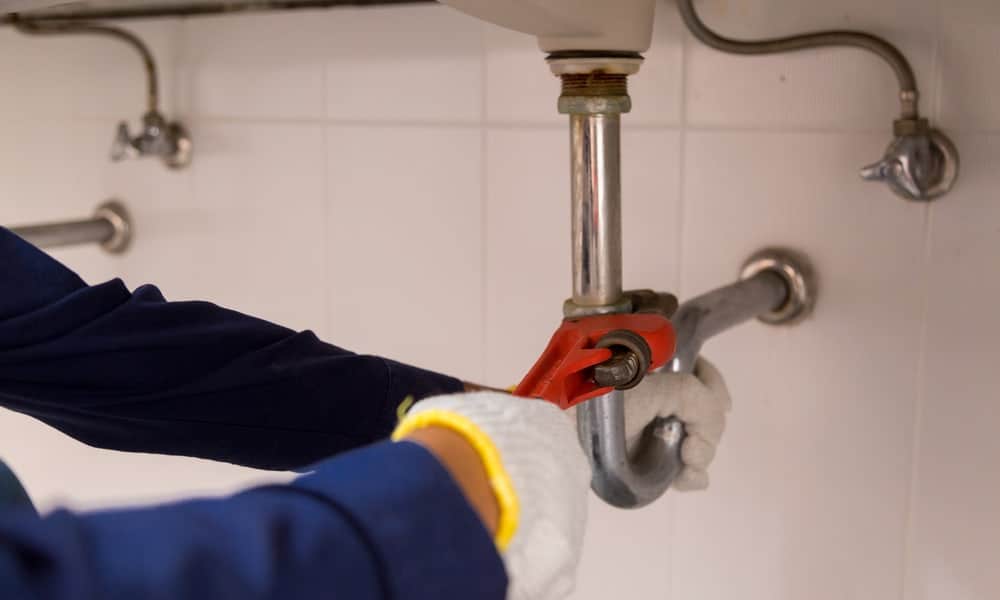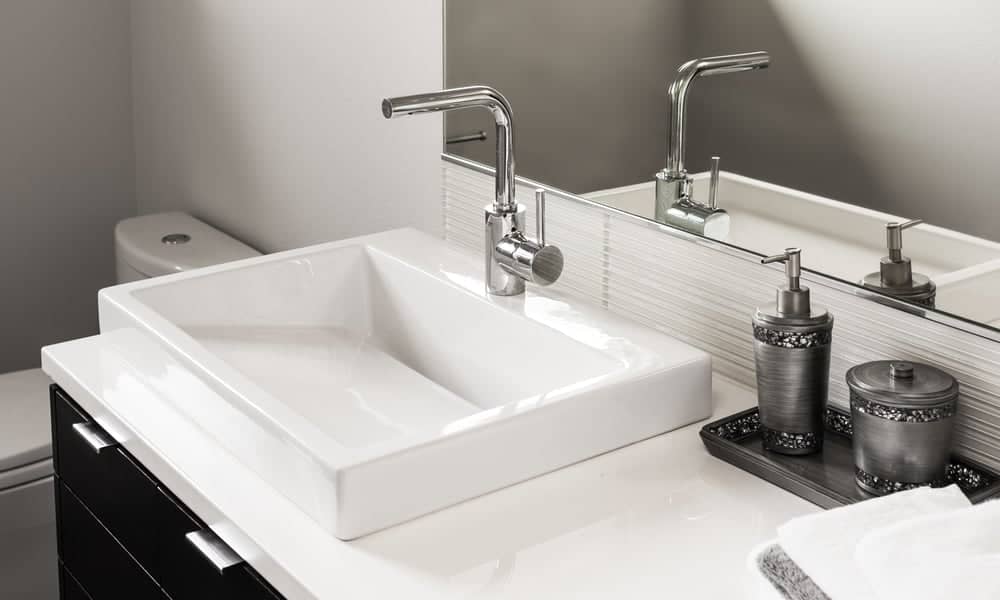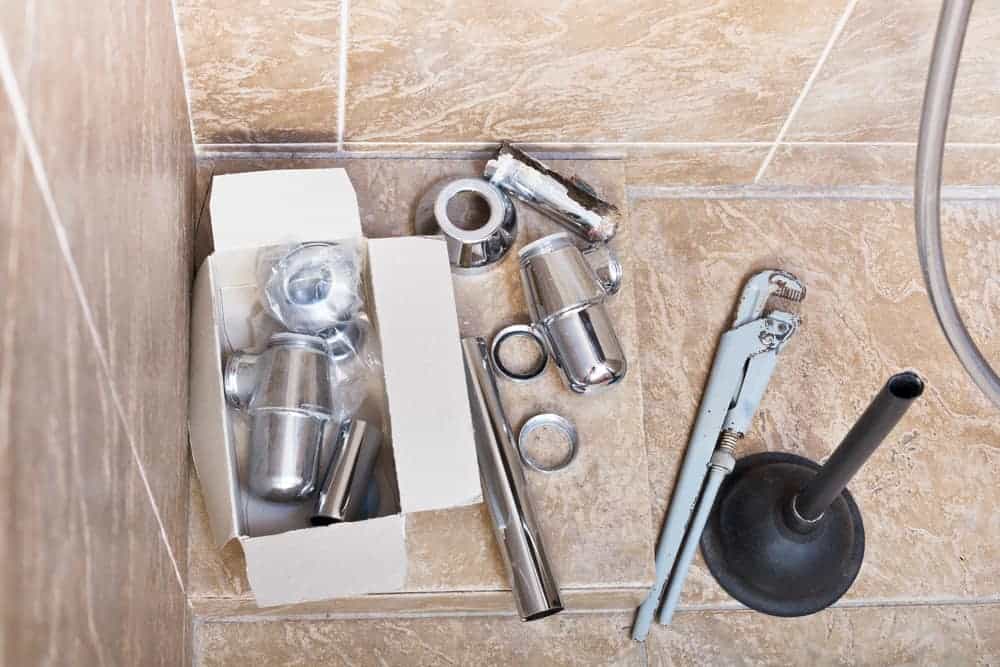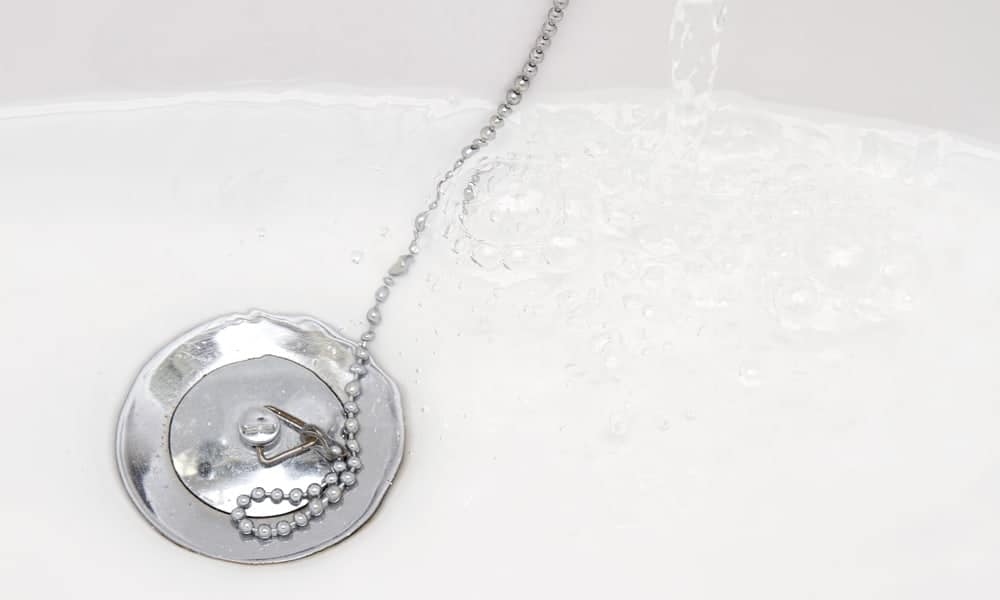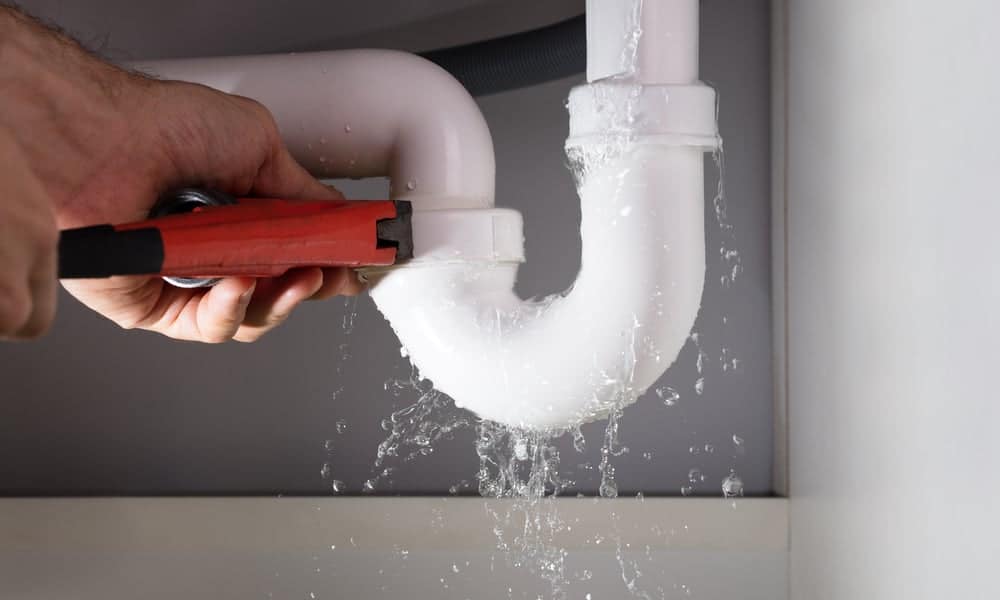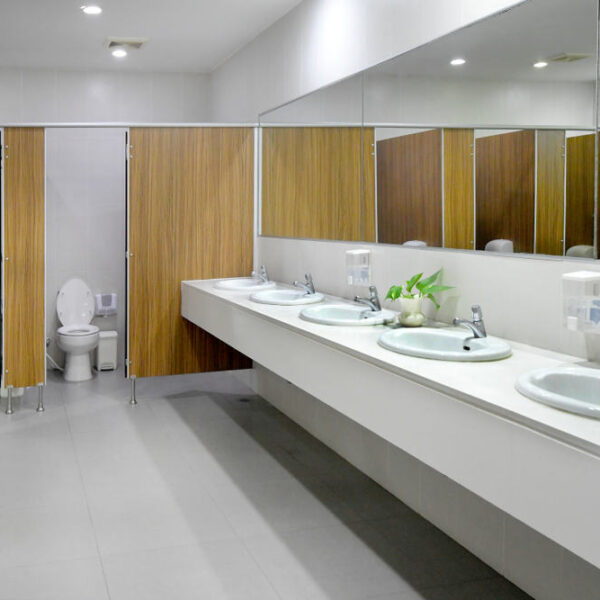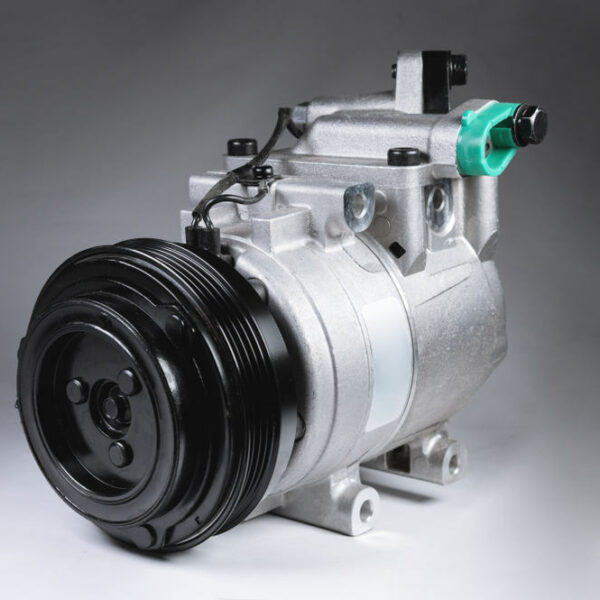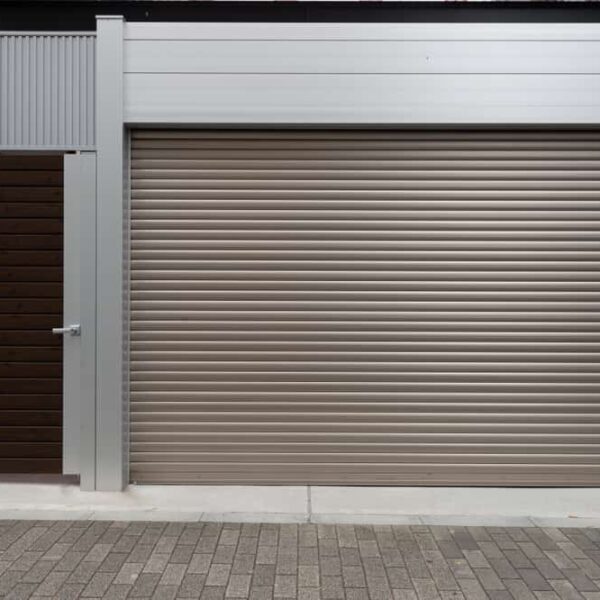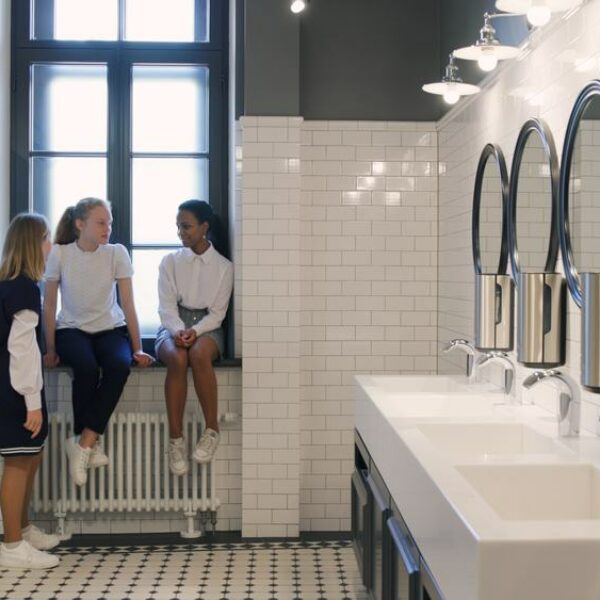A sink drain is one of those things it’s easy to overlook in your bathroom makeover. But as something you’ll look at every day, you want it to be attractive. And more importantly, if it doesn’t work properly, it will cause a real headache!
But how do you go about making the right choice? Our bathroom sink drain buying guide is here to help! Read on as we take you through the features to consider before you buy. By the time you’ve finished reading, you’ll be confident in making the perfect purchase.
So let’s get started!
How to Choose the Best Bathroom Sink Drain?
1. Sink Overflow or no?
The first thing to find out is whether or not your sink has an overflow. That’s a hole towards the top of your basin that stops it – well, overflowing. It also lets air into the drain so that the water will flow away more quickly when the sink is full.
Not all basins have an overflow, so check whether yours does before you shop for your sink drain. Buying a sink drain with an overflow will usually mean there’s also a neat cover for your overflow hole. That will give your bathroom more visual appeal.
But this is about more than just aesthetics. Drains with overflows also have an extra hole in the side of the pipe that runs out of the bottom. That means the water from the overflow can be admitted into the drain.
If your sink doesn’t have an overflow hole, don’t buy an overflow sink drain. It won’t work properly with your drainage system.
2. Check what else is included in the package
You’ve established whether or not you need an overflow sink drain. Next, consider what else you need included in the package.
Don’t assume different elements will come as standard. What counts as essential for a new bathroom may be unnecessary extras for someone looking for a replacement sink drain. So consider what elements you need for your home.
If you’re looking for a pop-up sink drain, for example, make sure it includes a lift rod. That’s the metal bit that you pull up to cover the drain.
The key point to bear in mind here is to check everything that comes as part of the package. You don’t want to find yourself paying for things you don’t need. Or worse, having to shop around for a compatible part you’d assumed was included but wasn’t.
3. Make sure your sink drain will fit
Surprisingly, not all sink drains will fit all basins – or all pipework. So check the dimensions you need in your bathroom before you go shopping.
The simplest way to do this is to check the instructions that were included with your basin. These should explain what size drain to buy. If you don’t have the instructions, measure the hole in the bottom of the basin yourself. Do it twice to avoid mistakes.
It’s the threaded part of the drain that needs to match the dimensions of the hole. That’s the measurement that will be included in the description of the sink drain. Don’t worry if the drain cover looks bigger or smaller than this – it won’t make any difference to the fit.
Most drain openings are between an inch and an inch-and-a-half. Most are 1.25 inches, though 1.5 inches and 1.625 inches are common too.
4. What kind of drain do you want?
Once you’re clear about the features you need for your sink, it’s time to think about the ones you want.
Drains can be opened and covered in different ways.
The most basic is a simple chain and plug. With these, you just grab hold of the chain and give it a tug to remove the plug. It’s easy and inexpensive. There are lots of different kinds of plug on offer too, from black rubber to metallic finishes.
If you opt for this kind of drain, steer away from rubber plugs if you can. They won’t cost very much, but they’re more at home in a sink in a utility room. They won’t give you the luxurious feel you want in your bathroom.
Alternatively, you might want to consider a pop-up drain, also known as a “press and seal” drain. There’s no chain to break or get lost here. Instead, you simply press on the drain cover for it to pop up and down. These kinds of drains have a metallic finish, so look much smarter than a rubber plug.
With some kinds of drain, you can press on one side and it will flip to allow the water to exit. That’s another neat solution that avoids a chain.
Then there are “twist and turn” drains. These feature a small knob on top of the drain that you press and turn to open or close it.
Or if you prefer to keep your hand away from the water altogether, consider a drain with a pop-up rod. With these, a metal wand extends above the top of your basin. Push it down to make your drain pop open, and pull it back up again to close it.
5. Guard against clogging
The bane of any sink drain is clogging. In the bathroom, you won’t have to worry about food debris or oil clogging up your pipes. But your sink drain will still have to cope with soap scum and hair.
Deal with that by looking for an option that has a barrier. Some sink drains will include a basket to prevent unwanted bits getting into your plumbing. They also mean that you won’t lose rings or other jewellery down your drain.
The basket is usually made of the same material as the drain so that it looks neat. You’ll need to lift it out and give it a clean every so often. It’s not a pleasant job, but it’s nowhere near as bad as having to try to clear a blocked pipe!
Don’t confuse a sink drain with a basket with a strainer drain. Strainer drains have no cover, and they’re commonly used in bar sinks and – whisper it – urinals. If you want to be able to fill your bathroom basin with water, they’re not the option to choose.
6. Protect against leaks
A leaking sink is a pain and it can cause a lot of damage in your bathroom. Look for sink drains that will help prevent leaks with good materials and construction.
Brass is often used in good quality bathroom fittings. It’s solid and won’t corrode over time. Stainless steel is another good option.
Examine the sink drain for any seams that might let in water. If you spot any, don’t buy it. There are plenty of drains that are made in a single piece, and they’ll be far less prone to leaking.
Look out for other features to help stop water escaping too. Thickened silica gel gaskets can prevent the need to add tape or putty to make the installation watertight.
7. Ease of installation
Even if you’re planning to get in a professional, it’s worth looking at ease of installation. A tricky set-up will cost your plumber time. That will end up costing you money – or at the very least, goodwill you’ll miss come your next plumbing emergency.
All that goes double if you’re planning to install your bathroom sink drain yourself. So what should you look for to get a hassle-free installation?
One helpful feature is the positioning of the threading. A drain that has threading all the way up will be far easier to attach to the bottom of your basin.
Some sink drains can also be installed without needing to use plumbing tape or plumbers’ putty. If that’s the case, the product description should say so.
But by far the most effective way to check ease of installation is to look at online reviews. Anyone who’s installed a bathroom sink drain themselves will usually comment on how easy or difficult they found it. A few minutes spent looking at what they’ve said can save you a lot of time later.
8. Think about the finish
Finally, make sure that the sink drain you choose complements your other bathroom fittings.
Whilst it’s possible to choose a different finish for your faucet, we wouldn’t recommend it. If you’re looking for interesting accents, buy a funky soap dish. Call us conventional, but we think faucets and drains should match.
And if you haven’t got your other bathroom fittings yet, think about what look you want. For country charm, brass or oiled bronze look great. For sharp, contemporary style, choose brushed nickel or stainless steel.
If you’re looking for sparkle, go for chrome. It will look great under bright lighting. And if you’re all about the bling, search out a gold sink drain for a real statement.
Wherever possible, choose a drain that has matching faucets. Those finishing touches will really pull together your whole bathroom design scheme.
Ready to go shopping?
We hope you’ve enjoyed our guide to choosing the right bathroom sink drain for your home. Start by thinking about the practicalities, like size and whether you need an overflow. And when you’ve done that, enjoy choosing the features that will add the final touches to your bathroom design.
And if you’re renovating your bathroom, or installing one from scratch, we’d love to hear from you! How did you go about making the perfect choice for your home? Please comment and let us know!
